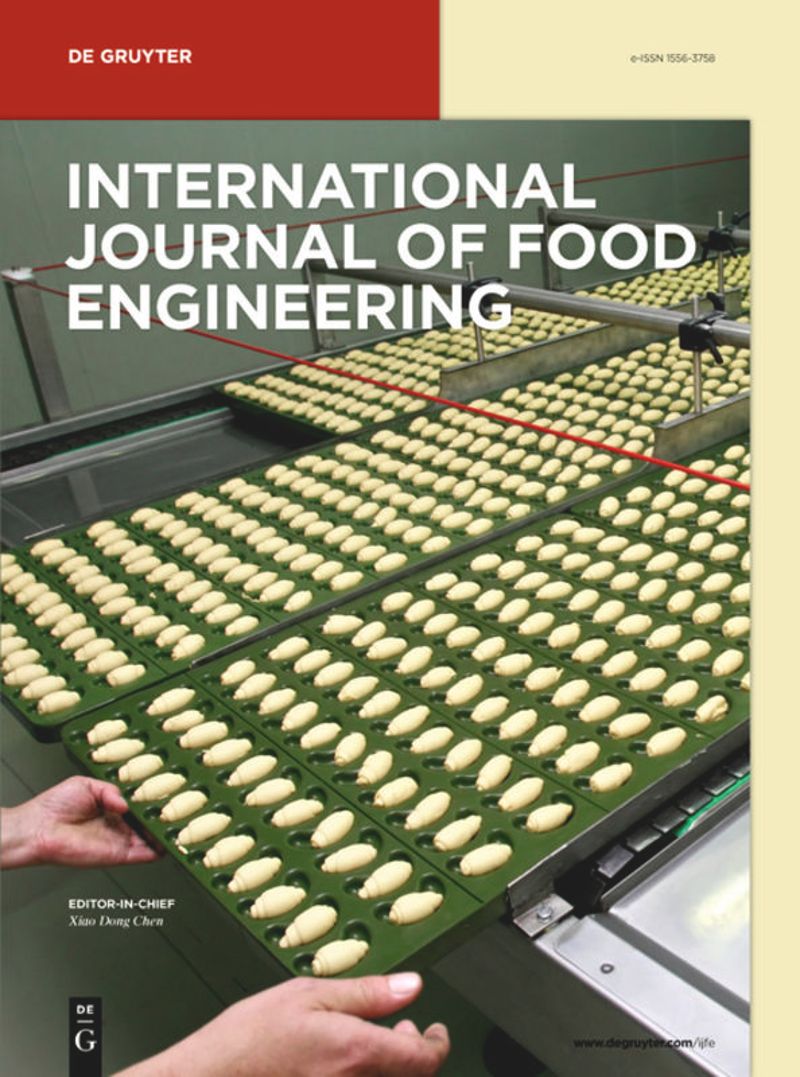Detection of chicken and fat adulteration in minced lamb meat by VIS/NIR spectroscopy and chemometrics methods
IF 1.4
4区 农林科学
引用次数: 2
Abstract
Abstract Meat fraud has been changed to an important challenge to both industry and governments because of the public health issue. The main purpose of this research was to inspect the possibility of using VIS/NIR spectroscopy, combined with chemometric techniques to detect the adulteration of chicken meat and fat in minced lamb meat. 180 samples of pure lamb, chicken and fat and adulterated samples at different levels: 5, 10, 15 and 20% (w/w) were prepared and analyzed after pre-processing techniques. In order to remove additive and multiplicative effects in spectral data, derivatives and scatter-correction preprocessing methods were applied. Principle Component Analysis (PCA) as unsupervised method was applied to compress data. Moreover, Support Vector Machine (SVM) and Soft Independent Modeling Class Analogies (SIMCA) as supervised methods was applied to estimate the discrimination power of these models for nine and three class datasets. The best classification results were 56.15 and 80.70% for classification of nine class and three class datasets respectively with SVM model. This study shows the applicability of VIS/NIR combined with chemometrics to detect the type of fraud in minced lamb meat.用VIS/NIR光谱和化学计量学方法检测羊肉肉末中鸡肉和脂肪的掺假
摘要由于公共卫生问题,肉类欺诈已成为行业和政府面临的重要挑战。本研究的主要目的是检验使用可见光/近红外光谱法结合化学计量技术检测羊肉糜中鸡肉和脂肪掺假的可能性。制备了180份纯羊肉、鸡肉和脂肪样品以及不同含量的掺假样品:5%、10%、15%和20%(w/w),并通过预处理技术进行了分析。为了消除光谱数据中的加法和乘法效应,采用了导数和散射校正预处理方法。将主成分分析(PCA)作为一种无监督方法应用于数据压缩。此外,应用支持向量机(SVM)和软独立建模类类比(SIMCA)作为监督方法来估计这些模型对九类和三类数据集的判别能力。用SVM模型对9类数据集和3类数据集进行分类,最佳分类结果分别为56.15%和80.70%。本研究表明VIS/NIR与化学计学相结合可用于检测羊肉糜中的欺诈类型。
本文章由计算机程序翻译,如有差异,请以英文原文为准。
求助全文
约1分钟内获得全文
求助全文
来源期刊
CiteScore
3.20
自引率
0.00%
发文量
52
审稿时长
3.8 months
期刊介绍:
International Journal of Food Engineering is devoted to engineering disciplines related to processing foods. The areas of interest include heat, mass transfer and fluid flow in food processing; food microstructure development and characterization; application of artificial intelligence in food engineering research and in industry; food biotechnology; and mathematical modeling and software development for food processing purposes. Authors and editors come from top engineering programs around the world: the U.S., Canada, the U.K., and Western Europe, but also South America, Asia, Africa, and the Middle East.

 求助内容:
求助内容: 应助结果提醒方式:
应助结果提醒方式:


